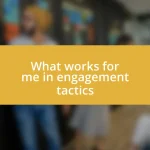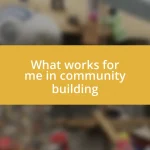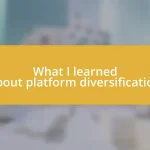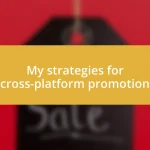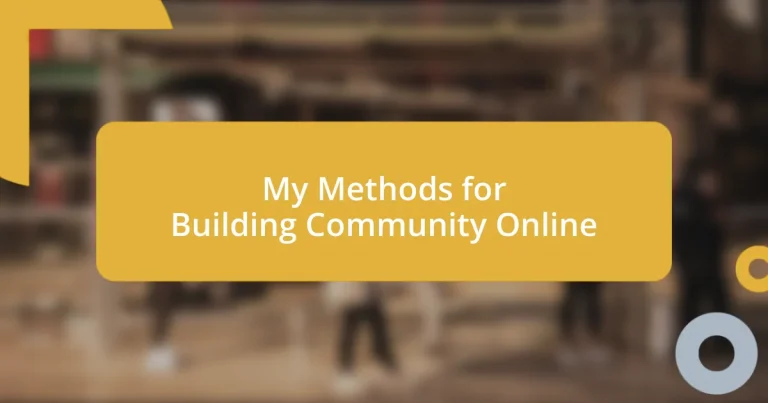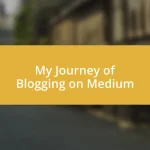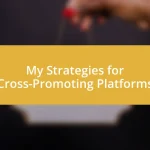Key takeaways:
- Building an online community requires genuine connections, understanding audience dynamics, and adapting to unique cultures within different digital environments.
- Engagement strategies like storytelling, interactive content, and consistency help foster vibrant discussions and deeper relationships among community members.
- Measuring engagement goes beyond metrics; actively seeking feedback, tracking retention rates, and nurturing leadership are essential for sustaining long-term community growth.
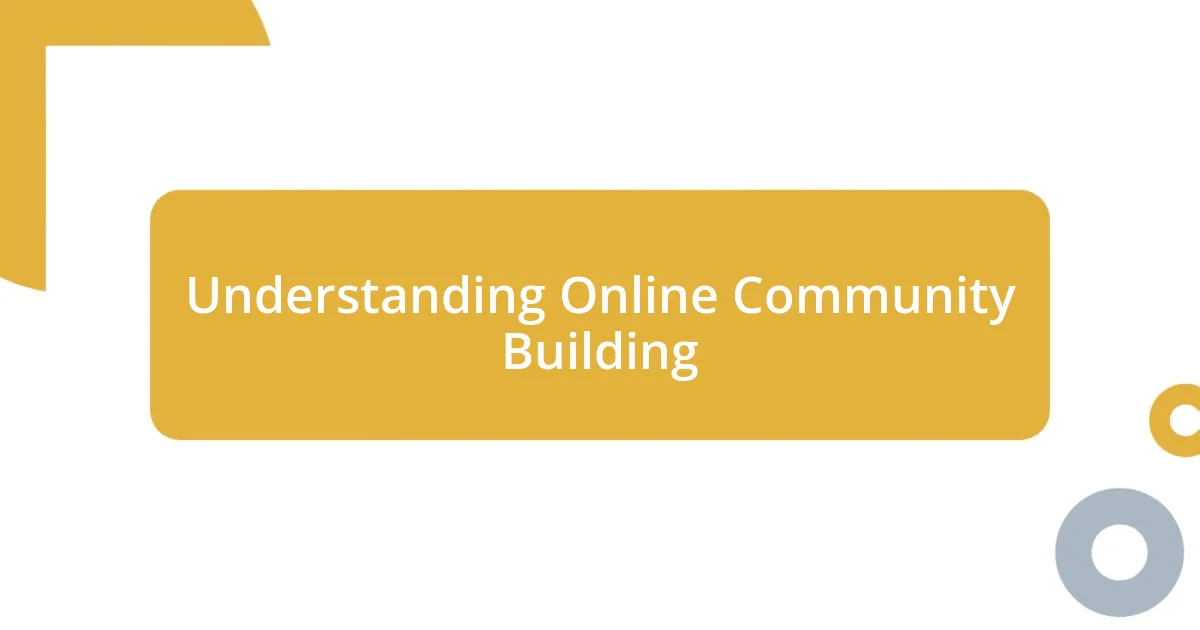
Understanding Online Community Building
Building an online community is about creating genuine connections and fostering a sense of belonging. I remember when I first ventured into a niche online forum; it felt like stepping into a cozy cafe where everyone shared similar passions. Have you ever experienced that warm feeling when your thoughts resonate with others? It’s that connection that transforms casual interactions into meaningful relationships.
Understanding the dynamics of online community building goes beyond just gathering followers; it’s about cultivating engagement. I’ve noticed when I share personal stories or challenges, the response often deepens the dialogue, allowing others to share their experiences too. Isn’t it incredible how vulnerability can create a safe space for others to open up?
It’s also essential to acknowledge that every community has a unique culture and vibe. Reflecting on the online groups I’ve participated in, I see how each one’s rules and norms influenced interactions. How do you adapt your approach to fit different digital environments? Recognizing these nuances can be invaluable in nurturing an online community that thrives on collaboration and support.
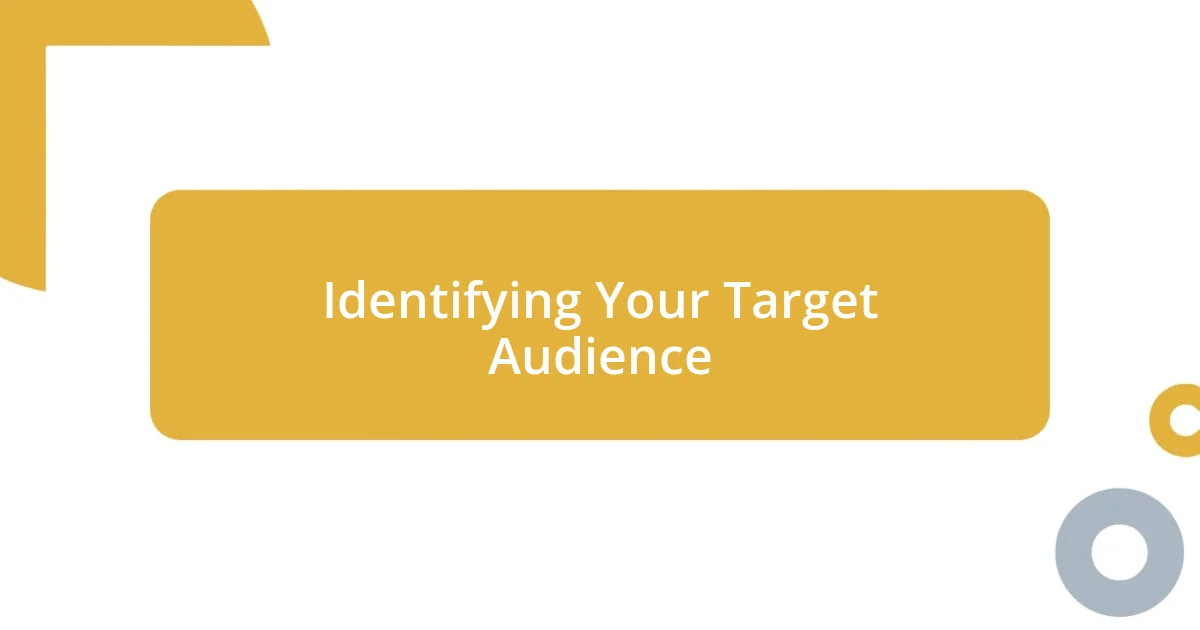
Identifying Your Target Audience
Identifying your target audience is a crucial step in building an online community. I’ve learned this firsthand after joining a gaming forum where the diversity of user interests made it a bit challenging to find common ground at first. Understanding who your audience is allows you to tailor content and interactions that resonate with them. It makes sense, doesn’t it? The more you know about your audience, the more effectively you can engage them.
When I started my blog, I made the mistake of assuming everyone would be interested. It wasn’t until I conducted a simple survey that I discovered my audience was primarily young professionals seeking career advice. This insight completely changed the way I created content, shifting my focus to their specific needs and aspirations. I found that when I addressed those needs directly, engagement skyrocketed! What have you done to better understand those who follow you online?
In practical terms, think about demographics, interests, and behaviors to pinpoint your audience. One way I’ve done this is by observing the types of questions my followers ask and the kind of content they share. This analysis not only helps in refining my approach but also establishes a connection that feels more genuine because I’m speaking directly to their interests. Isn’t it fascinating how making a little effort to understand your audience can yield such rich rewards?
| Aspect | Example |
|---|---|
| Demographics | Age, gender, location |
| Interests | Hobbies, passions, values |
| Behaviors | Online activity, engagement patterns |

Creating Engaging Content Strategies
Creating engaging content strategies is all about resonating with your audience on multiple levels. I’ve discovered that it’s not enough to simply push out information; it’s about presenting it in a way that sparks curiosity and invites conversation. For instance, when I started incorporating interactive elements like polls or questions at the end of my posts, I was thrilled to see how they energized my community. It’s that little nudge that encourages participation and creates a vibrant atmosphere.
To foster engagement, consider these key strategies:
- Storytelling: Share personal experiences that connect emotionally with your audience.
- Visual Content: Use eye-catching images or videos; they can convey messages faster and more compellingly than text alone.
- Interactive Posts: Encourage comments by asking open-ended questions or running contests.
- Content Variety: Mix formats—blogs, podcasts, infographics—to cater to different preferences.
- Regular Updates: Consistency builds trust; keeping your community informed fosters a sense of reliability and expectation.
By weaving these elements into your content strategy, you create an inclusive space where everyone feels valued and encouraged to join the conversation. Each interaction can lead to deeper relationships and a stronger community bond.
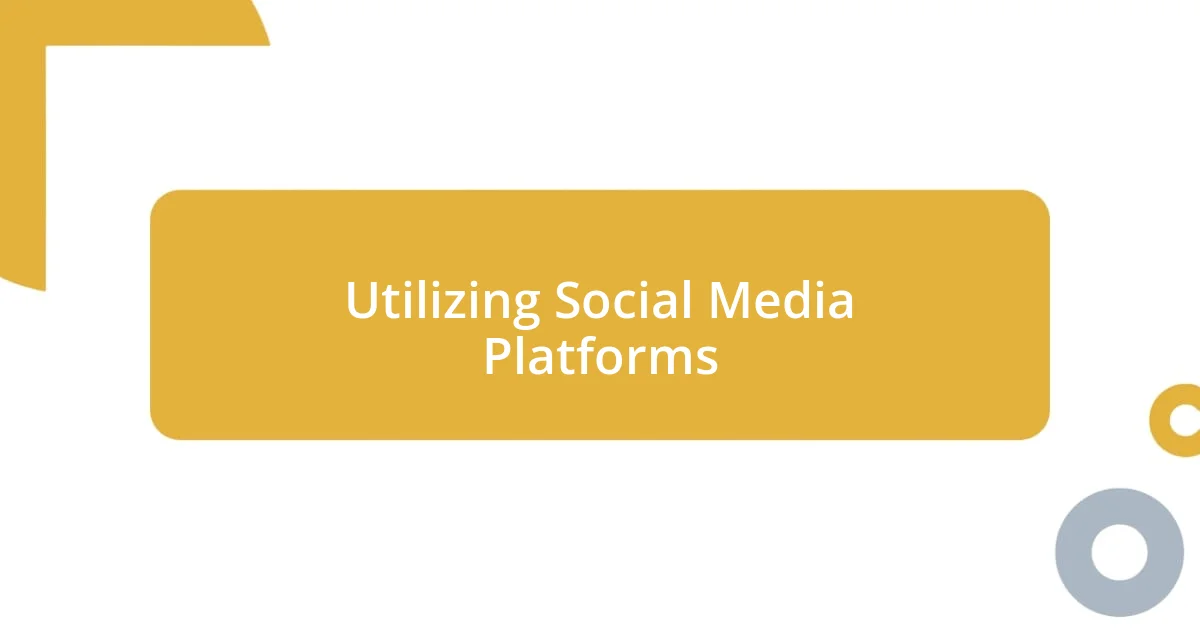
Utilizing Social Media Platforms
Social media platforms are a powerful tool for building an online community, and I’ve seen how they can transform casual interactions into meaningful connections. When I started my Instagram for my blog, I was amazed at how quickly I could connect with others who shared my interests. By sharing personal stories and behind-the-scenes looks at my life, I found that followers began engaging more—not just liking my posts, but also commenting and sharing their own experiences. Have you ever noticed how a simple story can spark an avalanche of conversations?
One strategy that has worked wonders for me is creating dedicated groups on platforms like Facebook. When I formed a group focused on career development, I fostered a safe space for members to share challenges and triumphs. The joy of watching someone share their new job success or ask for advice is incredible! It’s like being part of a close-knit community where everyone is invested in one another’s growth. Isn’t it fulfilling to know that you’ve created such a supportive environment?
Additionally, I’ve learned the importance of consistency in posting. Regular updates keep your community engaged and eager for more. I remember a time when I took a break from posting due to personal reasons, and the messages I received asking if everything was okay reminded me of the bonds I had forged. It’s a reminder that people genuinely care and value what you bring to the table. How often do you check in with your community? Building that connection can make all the difference in creating a vibrant, active online space.
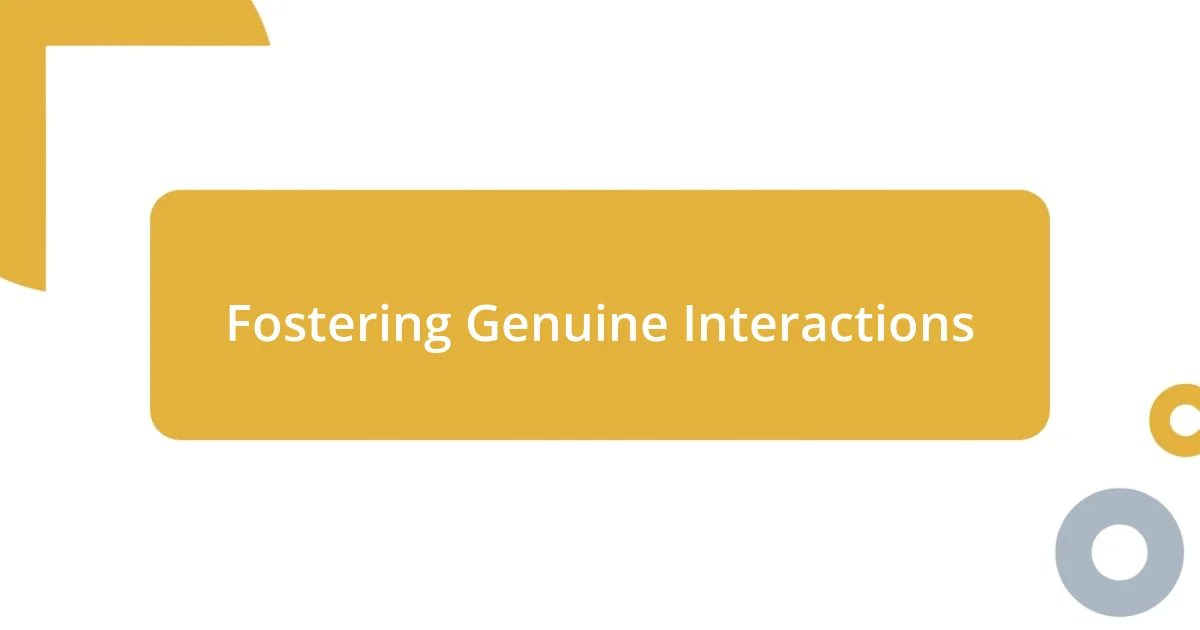
Fostering Genuine Interactions
Fostering genuine interactions in an online community begins with authenticity. I remember posting a candid story about a setback I faced; it felt vulnerable at first, but the response was overwhelming. People started sharing their own experiences, and it was as if a collective sigh of relief was exhaled. Hasn’t there been a moment when you shared something personal online and instantly felt the warmth of connection? Those moments are the heart of community-building.
Another approach that has been invaluable to me is actively listening to my audience. I engage with comments thoughtfully, responding not just with a simple “thank you” but by genuinely digging into what they’ve shared. When a follower opened up about struggling with anxiety, I shared resources and even suggested ways to navigate those feelings. It felt good knowing I could provide support. Have you ever taken the time to not just reply, but to truly listen and understand what your community members are saying? It can transform superficial exchanges into enriching discussions.
Lastly, I’ve found that creating shared experiences can lead to deeper interactions. For instance, I hosted a virtual book club where we not only discussed a chosen book, but also delved into our personal reflections. The way participants connected over their interpretations created a bond I hadn’t anticipated. It made me realize how much people crave those moments of togetherness, even in the digital realm. What kinds of shared experiences could you initiate in your community to spark authentic conversations? Those opportunities can be the building blocks of a thriving network.
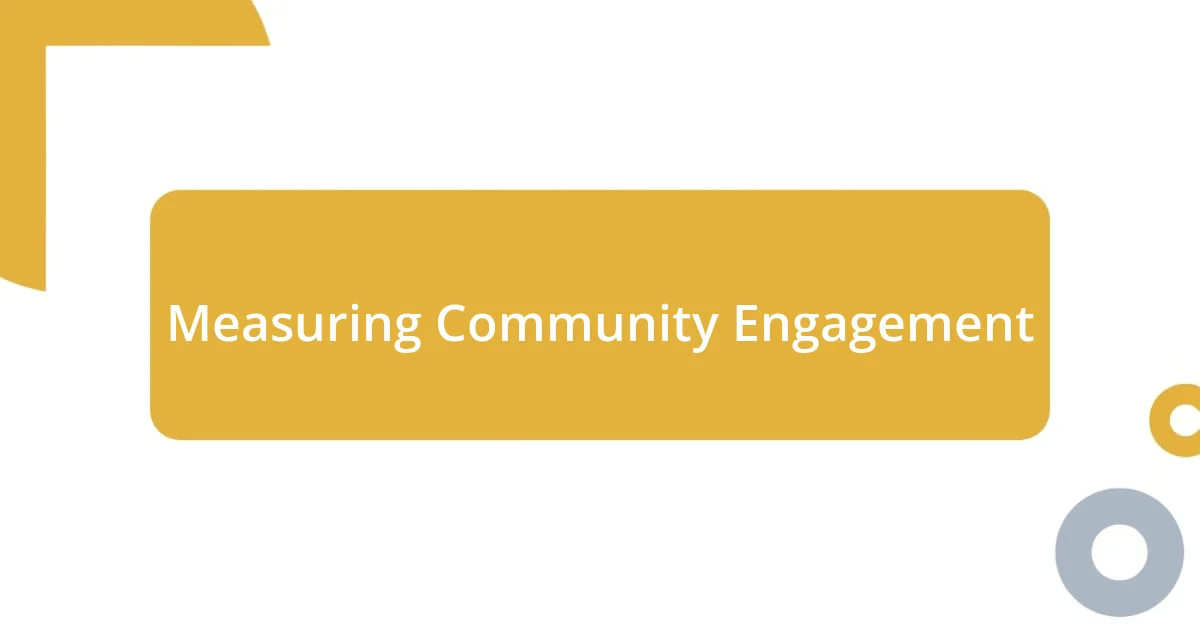
Measuring Community Engagement
To effectively measure community engagement, I’ve realized that metrics alone don’t tell the whole story. For instance, while tracking likes and shares can indicate interest, I often find that quality interactions in comments can be a much clearer indication of how connected members feel. Have you noticed how a single thoughtful comment can ignite a discussion? That’s the kind of engagement I love to track—it signals a deeper investment from community members.
I also prioritize the use of surveys and polls to gauge sentiments. After hosting a live Q&A, I sent out a quick survey asking participants how they felt about the experience. The responses were enlightening! People expressed their appreciation for the personal touch, and many suggested topics for future sessions. It often surprises me how willing community members are to share their thoughts when given a simple avenue to do so. Have you considered how feedback can refine your community’s focus?
Lastly, I’ve learned to track retention rates as a vital indicator of engagement. When I noticed a dip in interactions within a specific audience segment, it made me reflect on what might be lacking. I reached out to those members directly, asking how I could better serve their interests. The insights I gained not only helped me adapt but also reinforced the importance of listening. Have you ever taken a moment to directly ask your community what they need? It can be a game-changer in fostering long-term engagement.
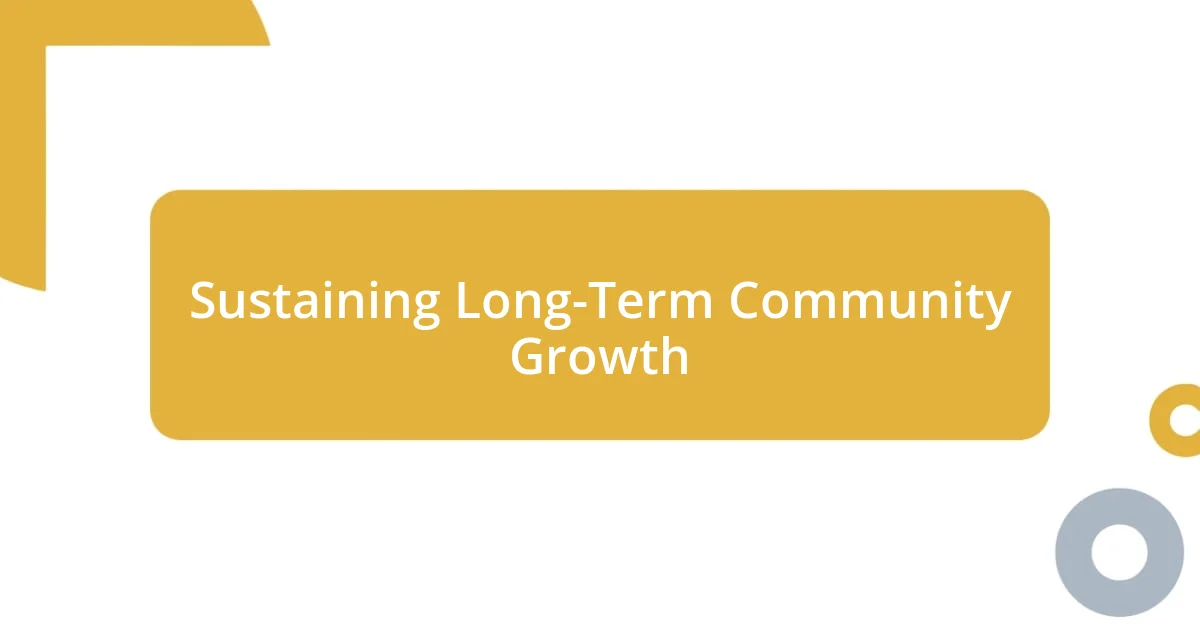
Sustaining Long-Term Community Growth
Sustaining long-term growth in an online community involves consistent effort and strategic planning. I vividly recall a time when I launched a monthly theme that resonated with my audience. By inviting them to participate in ongoing discussions, I noticed that it not only kept the content fresh but also encouraged members to return regularly. Have you ever thought about how a recurring theme could draw your community together and maintain interest over time?
I’ve come to appreciate the immense value of celebrating milestones, both big and small. When we hit a certain number of members, I organized a virtual celebration to thank everyone for their contributions. The joy and camaraderie that filled the chat made it clear that recognition fosters loyalty. How often do you acknowledge the achievements within your community? A simple “thank you” can go a long way in making everyone feel valued and connected.
Moreover, nurturing leadership within the community is crucial for its longevity. I started to identify active members and empower them to take on roles like moderators or content creators. This delegation not only alleviated pressure from me but ignited a spark in them, as they felt a deeper connection to the community’s growth. Have you considered who among your members might be ready to step up? Their involvement can create a sense of ownership that is vital for sustained engagement.

